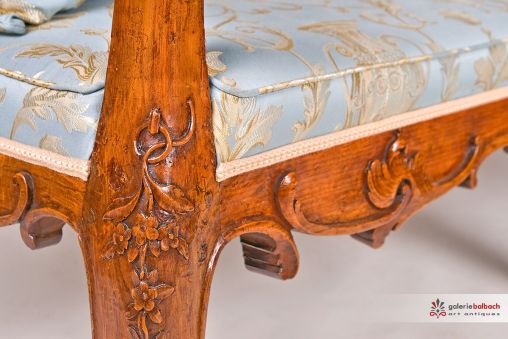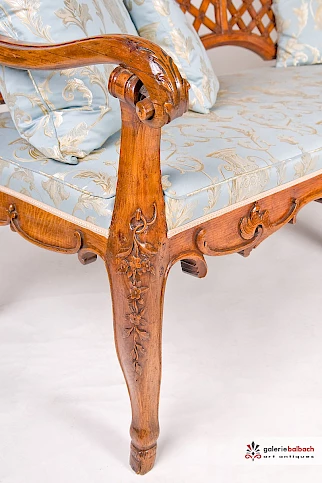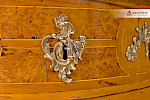Rococo
 The term "rococo" is derived from the term "rocaille", a shell-shaped, usually asymmetrical decorative element. Rococo as a style refers to the late phase of the Baroque and covers roughly the period 1730-1770. Baroque and Rococo existed partly in parallel, with Rococo developing out of Baroque.
The term "rococo" is derived from the term "rocaille", a shell-shaped, usually asymmetrical decorative element. Rococo as a style refers to the late phase of the Baroque and covers roughly the period 1730-1770. Baroque and Rococo existed partly in parallel, with Rococo developing out of Baroque.
The Rococo began first in France, as a countermovement to the very heavy Louis XIV (Quatorze). Here we speak of the Louis-XV (Quinze) epoch, designated in each case after the reigning kings.
Rococo furniture
In the Rococo period, furniture underwent only a slight change compared to the preceding Baroque period. While Baroque furniture still seemed heavy, large and rigidly symmetrical, these characteristics were replaced in the Rococo by asymmetrical elements, opposing curves and an altogether lighter design.
The formal language of the furniture retained its curves from the Baroque period, but generally became lighter and more ladylike. Asymmetrical elements give the Rococo its character. Carved volutes and wrought-iron rocailles became just as influential as inlaid birds, flowers and butterflies.
Also interesting

Fächermotivik
The fan is a frequently found decorative motif on antique furniture, taken from Renaissance architecture. [...]Read more








